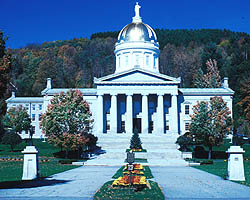The Vermont State House is one of the most beautiful buildings in the state. With its majestic architecture and rich history, it is a must-see for everyone. This article covers the various features of the building, from the architecture to the restoration project. It also takes a look at the statues, stained glass skylights, and seats for justices of the State’s supreme court.
Restoration project
The Vermont State House is one of the oldest capitol buildings in the country. Built in 1859, the building’s original design was inspired by the federal capitol in Washington, D.C. It features a dome and two primary floors.
In addition to being the home of the Vermont Senate, the state house also houses the offices of the Governor and Secretary of State. It is located on State Street in Montpelier, a small town one block north of the Winooski River.
A restoration project for the State House began in 2000. It has taken nearly twenty years to complete. Many fixtures from the original house have been restored, while others were removed.
Architecture
The Vermont State House is one of the most well-preserved state houses in the country. Built in 1857, the building is a fine example of the Greek Revival style.
The two main floors of the building include the Executive Chamber and the Legislative Chambers. In addition, the State Library is on the second floor. Despite the building’s age, most of its furnishings date to its reconstruction in the mid-1859s.
The first state house, a three-story, wood frame structure, was built in 1808. This was too small and wore out quickly. A committee was appointed to plan a new house. They visited state houses in Boston, New Haven, and Concord.
Stained glass skylights
Stained glass skylights are windows that allow natural light to enter a room. While they are usually used to provide a lighted view, they can also be decorative.
The Vermont State House was built in 1808 and is located on State Street in downtown Montpelier. It is the home of the state’s legislative branch of government. In addition to being a political office, the building serves as a cultural center, and is open to visitors when not in session.
Designed by Thomas Silloway, the current building was constructed in 1857 and 1858. Initially, the dome was a dark terracotta red color, but was later gilded.
Statues by Larkin Goldsmith Mead Jr.
Larkin Goldsmith Mead Jr. (July 18, 1835 – April 11, 1910) was a sculptor and artist who lived most of his life in Florence, Italy. His most famous sculpture, “Venezia,” is the personification of the city he called home.
In the 1860s, Mead studied under Henry Kirke Brown, and was later apprenticed to sculptor Hiram Powers. He remained in Italy for a period of time, where he met the beauty of his dreams, Marietta di Benvenuti. They married in 1866, and a decade later, Larkin moved to Vermont. After working as an illustrator for the venerable Harper’s Weekly, Mead made a successful career as a sculptor.
Seats for justices of the State’s supreme court
The seats for justices of the State’s supreme court are up for grabs in November 2022. Three candidates were on the ballot, including Chief Justice Kelly Thompson. It was the first time partisan party labels appeared next to a Supreme Court candidate’s name since state law changed last year.
The judicial branch has a wide range of responsibilities. They include day-to-day administration and strategic planning for state’s courts. But they also make rules regarding practice and procedure. In Illinois, for instance, the chief justice is elected by the other justices for a three-year term.
For the Illinois Supreme Court, the numbers fluctuated between eight and ten members over the past six years. Currently, Democrats hold a 4-3 majority. However, Democrats would be expected to grow to a 5-2 majority.
A large portrait of George Washington
The Vermont State House in Montpelier is a Neoclassical building topped with a gold leaf dome. It is located on State Street in the downtown of the city of Montpelier.
The Vermont state house was designed by Thomas Silloway. The dome is supported by Ionic columns. In addition, the building is set on a wooded hillside.
A large portrait of George Washington is a symbol of the nation’s founding and its first president. During the American Revolution, George was commander in chief of the Continental Army. He served two terms as the country’s first president.
Among his many achievements, George fought in the French and Indian War. His half-brother Lawrence Washington was his mentor. When he was younger, he worked as a surveyor.

